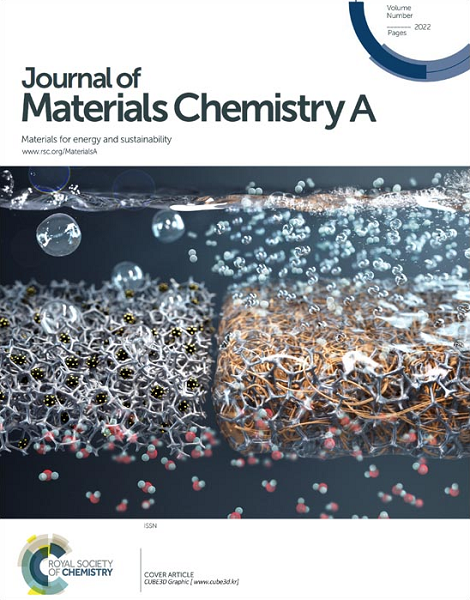Inspired by Wet Adhesion Behavior of Mussels to Construct Robust Cathode Protection Layer towards High-Performance Aqueous Zinc-ion Batteries
IF 10.7
2区 材料科学
Q1 CHEMISTRY, PHYSICAL
引用次数: 0
Abstract
Constructing artificial layers is regarded as an effective strategy to enhance the cathode performance of aqueous zinc-ion batteries (AZIBs). However, the inferior adhesion between artificial layer and cathode falls short of meetings the practical application requirements of device. In nature, mussels demonstrate stable wet adhesion to various substrates due to their secretion of dopamine species. Inspired by this unique mechanism, a unique polydopamine (PDA) layer was decorated onto the MnO2 nanorods via in-situ chemical polymerization, obtaining a PDA-coated MnO2 (PDMO) composite electrode. In combination with theoretical computations and experimental analysis, it is demonstrated that the PDA layer can improve the conductivity of electrode, restrain the active H2O molecules adsorption behavior, and boost the de-solvation process of hydrated Zn2+, which is due to its robust adhesion property, abundant zincophilic groups, and engineered hydrophobicity property. Therefore, the as-prepared PDMO cathode exhibited prominent electrochemical capability, such as desirable rate performance (125 mAh g-1 at 4 A g-1) and long-term cycling stability (157 mAh g-1 after 3500 cycles at 2 A g-1), which shows significant competitiveness with previously reported Mn-based cathodes. Meanwhile, the as-assembled PDMO||Zn pouch cell could also drive the electronic devices and exhibited enhanced cycling capability. This work integrates the bio-inspired design into battery system design and provides a bright direction towards AZIBs.求助全文
约1分钟内获得全文
求助全文
来源期刊

Journal of Materials Chemistry A
CHEMISTRY, PHYSICAL-ENERGY & FUELS
CiteScore
19.50
自引率
5.00%
发文量
1892
审稿时长
1.5 months
期刊介绍:
The Journal of Materials Chemistry A, B & C covers a wide range of high-quality studies in the field of materials chemistry, with each section focusing on specific applications of the materials studied. Journal of Materials Chemistry A emphasizes applications in energy and sustainability, including topics such as artificial photosynthesis, batteries, and fuel cells. Journal of Materials Chemistry B focuses on applications in biology and medicine, while Journal of Materials Chemistry C covers applications in optical, magnetic, and electronic devices. Example topic areas within the scope of Journal of Materials Chemistry A include catalysis, green/sustainable materials, sensors, and water treatment, among others.
 求助内容:
求助内容: 应助结果提醒方式:
应助结果提醒方式:


